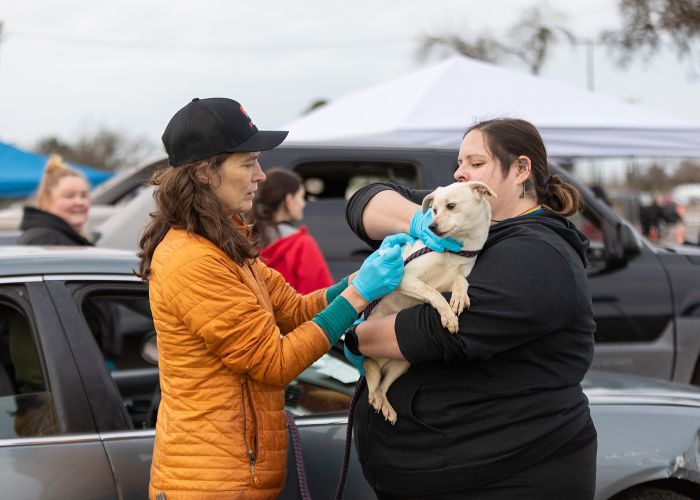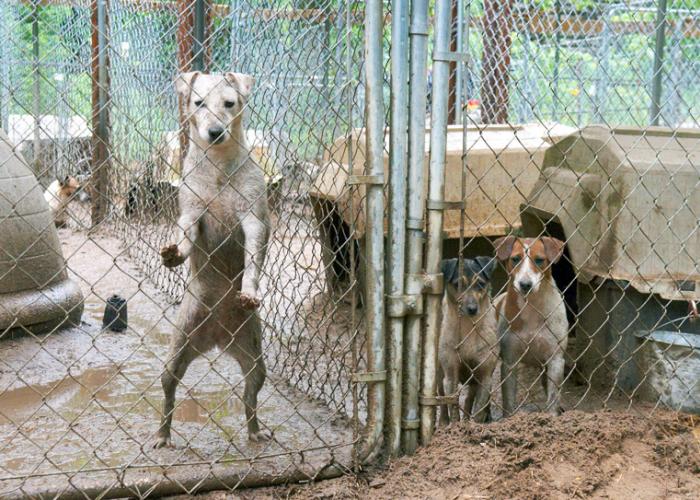Lives on the line
Animal control and welfare work can be dangerous. How can we reduce the risks?
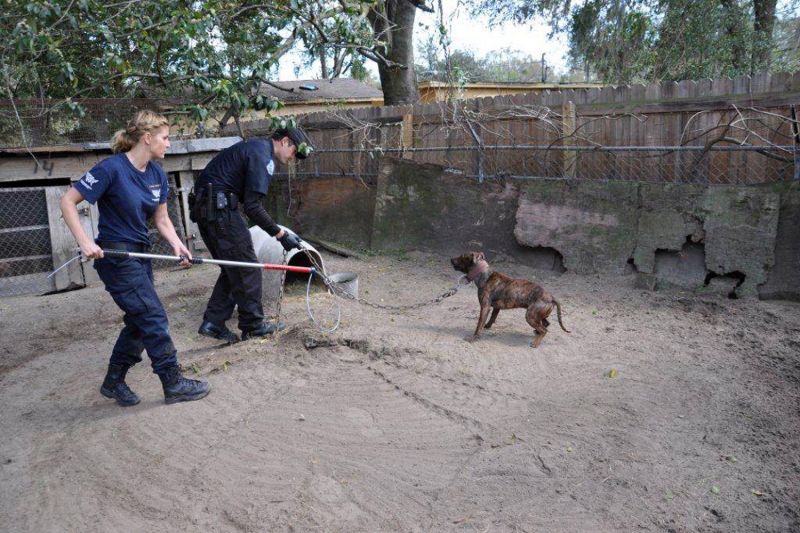
When animal control officer Bobby Evans reported for duty at the Bellmead Fire Department on June 18, 2007, he probably expected it to be a typical Monday morning. After checking in around 8:30 a.m., Evans—the lone ACO for the community located near Waco, Texas—headed to the shelter to check on the animals. When Evans failed to respond to radio calls, Bellmead fire chief James Karl went to the pound around 10 a.m. to check on his officer, only to discover that he’d been murdered—shot in the back multiple times.
With no evidence of a struggle and no recent threats, authorities were at a loss. Texas Rangers and the FBI quickly joined in the investigation, hoping that a combined law enforcement effort would help find his killer. As the reward fund built to more than $20,000—with donations from the Texas Animal Control Association, The HSUS, the National Animal Control Association (NACA), and others—the case was featured on America’s Most Wanted in September 2007. A break led investigators to two suspects already in jail on unrelated drug charges. James Ramirez and Jerry Newland Jr. were later charged and convicted of Evans’ murder. Newland was sentenced to life in prison while Ramirez was sentenced to serve 90 years.
Evans was well-respected. His daughter Crystal, in tears, was barely able to finish a statement at a press conference shortly after her father’s death. “All he ever wanted to do was make a difference in the world, whether it be helping that one person or saving that one animal,” she told the press.
Sadly, Evans’ death is not unique in the animal welfare field. Others, including officers, shelter workers, and volunteers, have faced threats, serious assaults, or even been killed in the line of duty. Sometimes they’ve been in the wrong place at the wrong time; sometimes their facility has been targeted by criminals—and sometimes tempers have flared with tragic results.
I’ve seen the dangers at close hand. During my career in animal control, I have been threatened, assaulted, and even run down by a suspect attempting to avoid a ticket. In that case, instead of receiving minor citations for not having a dog license, the suspect ended up convicted of assault along with hit-and-run.
In one particularly terrifying situation at my former job in Norfolk, Va., humane officer Dee Bardin and I pursued a stray to a house where we were confronted by a despondent owner who, after threatening us and destroying property in her yard, retreated to her house—which, we were soon informed by a family member, was filled with weapons. Crouched behind our vehicles for cover, we waited for the tactical response team to arrive. Luckily, negotiators were able to resolve the situation without anyone being injured.
But almost all of the officers in my unit in Norfolk were victims of some form of assault during their careers, and it’s hardly a problem specific to the city.
In December 2009, Baltimore animal control officer Jermaine Barnes was shot and wounded while investigating a complaint of dogs being kept illegally in one residence and seizing a dog from another call. Barnes had parked curbside and was completing paperwork when a gunshot shattered the driver’s window and struck him in the hand.
Barnes was treated at the Maryland Shock Trauma Center and later released; he suffered significant damage to his hand and had to undergo multiple surgeries.
Interim health commissioner Olivia Farrow noted in a statement that animal control is a dangerous job, but a necessary one in order to protect public welfare by ensuring that pets are properly vaccinated, dangerous animals are caught, and hurt or endangered animals are rescued. According to Farrow, Barnes never returned to work after the incident.
Animal control officers put on their uniforms and go into the field many days knowing that ours is a dangerous job. But even animal welfare folks who don’t typically work in the field face danger. In 2008 in Christchurch, New Zealand, Kerry Downey, co-founder of a group called Cats Unloved, received a call from a local state housing tenant claiming he would kill a cat left behind by a previous tenant if no one came to collect the animal.
Downey served as office manager at the Cats Protection League and usually routed such calls to other volunteers, but this time, she volunteered to fetch the cat. The next morning, Downey did not report to work, and calls to her telephone went unanswered. Her body was found two days later; she had been killed. No one has been charged. A friend of the victim noted in an interview with the Sunday Star Times that the volunteers were often threatened or abused when responding to similar calls.
A Long History
Captain Jeff Christner of the Peninsula Humane Society & SPCA started compiling a list of line-of-duty deaths in 2002. Using news archives and information from fellow officers, his list reaches back to 1906, when a Cincinnati dog warden died from rabies after being bitten on the hand by a stray dog.
Unlike information on the deaths of police officers or firefighters, the records for animal control casualties have not been tracked or consolidated in any one location. Christner says his project started as casual research. He expected that someone would “eventually pipe up and say it’s already been done.” Instead, his project is the only list of its kind, and continues to grow as he compiles additional accounts. Christner says he knows there have been other line-of-duty deaths, but that some sources have been understandably reluctant to talk about them in detail. Some fear retaliation for disclosing unfavorable information about their employer. One officer who asked not to be named says their agency routinely disciplines officers for any injury because “all injuries are preventable.”
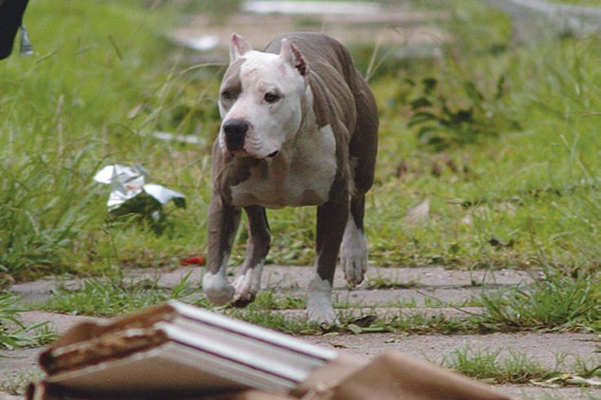
Posting to an online forum, Christner noted that “the list may not be 100 percent accurate and does include some police officers who were killed in the line of duty performing animal control-related duties.” Road-related deaths were most common, but Christner says that overall it looks like more officers were shot and killed as a result of animal control-related activities.
ACOs have been beaten or shot by animal owners, accidentally shot with their own weapons, and by other officers on a call. Despite these situations, most ACOs still are not issued body armor (commonly known as bulletproof vests).
Commenting in response to the posted line-of-duty list on the website ACOFunStop, one ACO noted, “This year was my 16th year in the field. I have been shot at twice. ... I lost track of the knives, machetes and swords that have been pulled on me. … Our agency carries very little protective gear. In a county with a population of over 900,000, we have 14-16 officers and the only thing we carry is a ‘bite stick.’ We have no body armor, weapons, or even pepper spray and have been told that we should always carry a clipboard in the event of a dog attack. I am constantly ‘knocking on wood’ that my day is safe, but it does bother me when county management clearly says in a meeting, ‘As long as no one has been killed or injured, we do not need to make any changes.’”
Threats from Within
Most threats officers encounter result from disgruntled animal owners. But over the past few decades, there have been increasing threats from an unexpected and troubling source: other animal lovers. In some cities, leaders and employees of major shelters have been physically threatened because local advocates take issue with how their agencies are being run. Reports from jurisdictions like Los Angeles and Miami have covered organized campaigns aimed at individuals— campaigns that have included smear tactics, public protests, petitions, and acts of vandalism.
The chief focus of these attacks often centers on the emotional and polarizing issue of euthanasia. Several national groups have been concerned about the increasing nastiness of these battles over policy, and The HSUS has sought to reduce the level of animosity through the implementation of a Humane Discourse Pledge. Organizations and individuals may electronically sign the document and, in doing so, pledge to work on animal welfare issues without personal attacks on animal welfare personnel. Physical or verbal intimidation, violence, and acts of terrorism are not solutions to animal welfare problems.
With the myriad dangers confronting animal control and animal welfare professionals, some organizations have taken official positions on equipping and training field staff. NACA lists recommended equipment for field officers, including ballistic vests, pepper spray/citronella, and bite sticks. The organization also provides guidelines for training certification and conducts training for use of the equipment and the procedural guidelines in its training academy, offered throughout the United States.
As a nationally certified animal control officer, I’ve had a great deal of training in animal services procedures, which included defensive tactics and animal handling (both companion animal and livestock). I’ve also been trained in dealing with difficult people, and conflict resolution. The difference between a tense situation and one that’s actually dangerous is often just a matter of degrees; frequently, a potentially dangerous situation can be prevented just by learning to sound friendly and nonconfrontational when dealing with citizens. A smart officer learns when an aggressive tone and body language are necessary, and when they’re more likely to make a situation worse.
Courses from NACA, my local police departments, and The HSUS have provided a variety of tools, strategies, and tips that have helped me safely return home from each shift. In some situations where prevention was not possible, the training served to minimize the injuries I suffered. Many of us bear scars that remind us to be more alert the next time. Training helps us share those experiences, so that others may successfully avoid some of the mistakes, mishaps, or trips to the hospital.
Legal Inequalities
Misha Goodman, vice president of NACA and a 28-year veteran of the animal control field, regards officer safety as a critical issue for any agency. Goodman’s personal experience includes being physically assaulted, confronted by a shotgun-wielding dog owner, and threatened with stabbing. “Animal calls can be very emotional, and distraught pet owners can do just about anything,” says Goodman, recalling a man whose dog had been picked up as a stray. Facing down a shotgun-wielding owner telling her, “You’re not taking my dog!” Goodman called for additional law enforcement, resulting in the man’s arrest.
Most animal control officers and animal welfare workers fall outside extended legislation that covers police and firefighters. Many states have enhanced penalties for crimes against traditional law enforcement and public safety officers, making some offenses felony-level or even capital crimes.
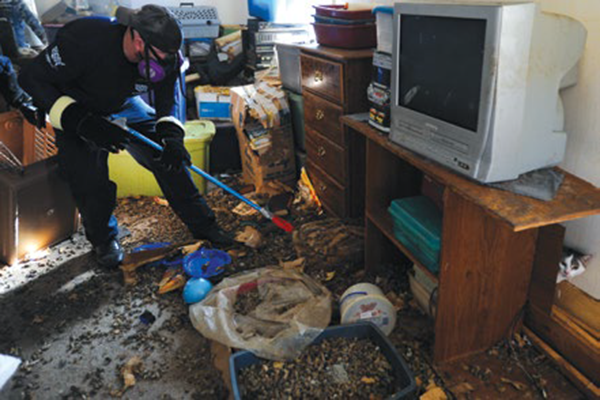
But Goodman explains that, nationwide, animal control officers face inconsistent classifications, and criminal penalties for assaulting them often carry lesser degrees of punishment. In her case, for example, the physical assault conviction resulted in only a minor fine. In Virginia, assaulting an animal control officer is a misdemeanor, but injuring a police dog is a felony.
Recently in Ohio, after a Franklin County dog warden was the victim of a severe assault while attempting to apprehend a stray dog, state Rep. Nancy Garland (D) of the 20th House District introduced a bill that would raise the penalty for assaulting a dog warden, humane agent, or animal control officer from a third-degree misdemeanor to a fifth-degree felony, equaling the protections for other law enforcement officers. This bill has the support of the Ohio County Dog Wardens Association for recognizing the dangers that all animal welfare professional face when performing their duties.
Medical provisions such as “Heart and Lung” acts recognize that heart attacks are line-of-duty injuries for public safety officers—but again, ACOs and others are often omitted. Efforts to include them have repeatedly failed, as local and state officials are against “incurring additional costs” or facing increased salaries. Although Bobby Evans was a volunteer firefighter and worked under the fire department, his position as an ACO was not classified as a public safety officer. As a result, his family was not eligible for the life insurance benefit that other public safety officers receive in Texas.
Animal control officers often face a lack of support, but they support each other by sharing suggestions to help protect each other against work-related and on-the-job threats or dangers. Most are simple, commonsense ideas such as avoiding fatigue by getting proper rest and not skipping meals. An officer’s physical condition can make a significant difference when he faces a challenge or crisis. Other safety strategies include having an unpublished home telephone number, keeping social networking contacts for work and personal life separate, and practicing what is known as “situational awareness,” both on and off the job. Exchanging information on problem cases, people, and animals can keep colleagues alert to potential hazards.
Each day, thousands of animal protection professionals leave their homes and loved ones to safeguard the millions of animals and citizens in the United States. Like their fellow law enforcement and public safety professionals, some of them don’t make it home at the end of their shifts. Their compassion finds them at work striving to do their best, despite budget cuts and challenges. Departments all over the country face layoffs, reductions, and outright elimination. Unfortunately, animal care and control doesn’t attract the attention that other public safety offices garner, resulting in a loss of services that goes unnoticed by the general public until a high-profile attack or animal hoarding case occurs. Then, locales find themselves without appropriate staff, resources, or the ability to respond. Officers are working to educate the public and elected officials that a well-trained, properly funded and equipped animal services staff is the best solution.
Some local departments recognize officers’ sacrifice, but until recently, there hasn’t been a national memorial to animal control officers. That has just changed. On Oct. 1, the National Animal Control Association Memorial Wall and Gardens was dedicated and opened at the organization’s headquarters in Olathe, Kan., a suburb of Kansas City. The wall is inscribed with the names of fallen officers and set against a garden backdrop where visitors can reflect on their losses and honor their memories.



